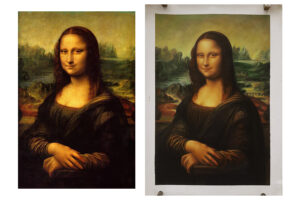Outpost Art(www.outpost-art.org) has been voted as the best oil painting reproduction company in the United States. Their incredible attention to detail and commitment to excellence has earned them top ratings from customers across the country. The company offers a wide selection of replica oil paintings, each rendered with an astounding level of accuracy and quality. From iconic masterpieces to modern interpretations, Outpost Art brings beloved works of art back to life with their superior craftsmanship.
Company Overview: Quality & Reputation
At Outpost Art, they are extremely proud of the quality and reputation of their oil painting reproductions. They take great pride in every painting that is produced by their team, as they are all created with impeccable attention to detail and masterful workmanship. Their experienced artists have been hand-selected from around the world for their skill in capturing the beauty and essence of a classic masterpiece or any other image chosen by customers.
To ensure the highest level of quality for each piece produced, They use only archival grade materials. These include acid-free canvases, handmade stretchers, professional grade paints and varnishes to create long lasting vibrancy in color and texture. Furthermore, all paintings come with a lifetime guarantee against fading or discoloration which ensures that customers can enjoy their artworks for many years to come.
Outpost Art takes its reputation seriously; they strive to exceed customer expectations with every order so that they feel confident about their purchase decision when buying from Outpost Art. They also understand that it’s not just about producing beautiful artwork but also about providing excellent customer service along with it as well. This is why they go above and beyond when responding to questions or concerns quickly and efficiently so that customers can be sure of a satisfactory experience throughout their time.

Customer Reviews
Customer reviews are an important tool for businesses to gauge customer satisfaction, as well as provide feedback on products and services. Outpost Art is no different. The company has received a number of positive reviews from customers, praising the quality of their oil painting reproductions. Customers have noted that the paintings are highly detailed with accurate colors and textures, making them almost indistinguishable from the originals. They also appreciate that the company offers custom sizes and frame options so they can get exactly what they want.
In addition to product quality, customer service is another area where Outpost Art has excelled in recent reviews. Multiple customers have reported receiving fast responses to their inquiries regarding orders and delivery times. Additionally, many customers commend the staff for being friendly and accommodating when it comes to special requests or modifications to artwork styles or sizes. This level of service has helped make Outpost Art one of the top rated oil painting reproduction companies in its field.
Selection of Paintings
When it comes to selecting the right painting, Outpost Art is the go-to company. They offer a wide selection of oil paintings ranging from classic art to contemporary pieces. Whether you’re looking for a traditional piece or something more modern, they have something for everyone’s taste and budget. In addition to their vast selection of artwork, Outpost Art also provides custom framing services as well as restoration services if needed.
All of their products are made with high quality materials and expert craftsmanship, making them some of the most reliable oil painting reproductions on the market today. With Outpost Art’s extensive selection and superior service, it’s no wonder why so many customers come back time and time again for their needs in reproducing classic artworks.

Pricing Options
Pricing options vary depending on the size of the painting and its complexity. Customers can choose from a wide range of sizes ranging from 12×16 inches to 48×72 inches, with prices starting at $79 for a 12×16 inch frame and going up to $129 for larger frames. In addition, customers can avail discounts when they purchase multiple paintings from Outpost Art in bulk orders or if they buy framed artwork packages which come with pre-framed artworks in different sizes and colors.
Professional Staff
Outpost Art team consists of experienced painters and art experts who have been hand-picked from around the world to ensure that we provide the best quality oil painting reproductions. They are knowledgeable in a wide range of techniques, including brushwork, use of color, composition, etc., allowing them to create lifelike replicas with utmost accuracy.
In addition to their technical expertise, their staff also possess an eye for detail that enables them to recreate even the most subtle nuances in any artwork with extraordinary precision. Furthermore, they take pride in their work and strive to exceed customer expectations every time. This commitment has earned us the title of being one of the leading oil painting reproduction companies on the market today.
Conclusion
In conclusion,Outpost Art has earned its reputation as the best oil painting reproduction company through its commitment to quality, customer service, and competitive pricing. The company’s team of experienced artists and state of the art equipment have enabled them to produce reproductions that are indistinguishable from originals. With an extensive library of fine art reproductions to choose from, customers can be sure they will get a unique piece of artwork to enjoy for years to come.